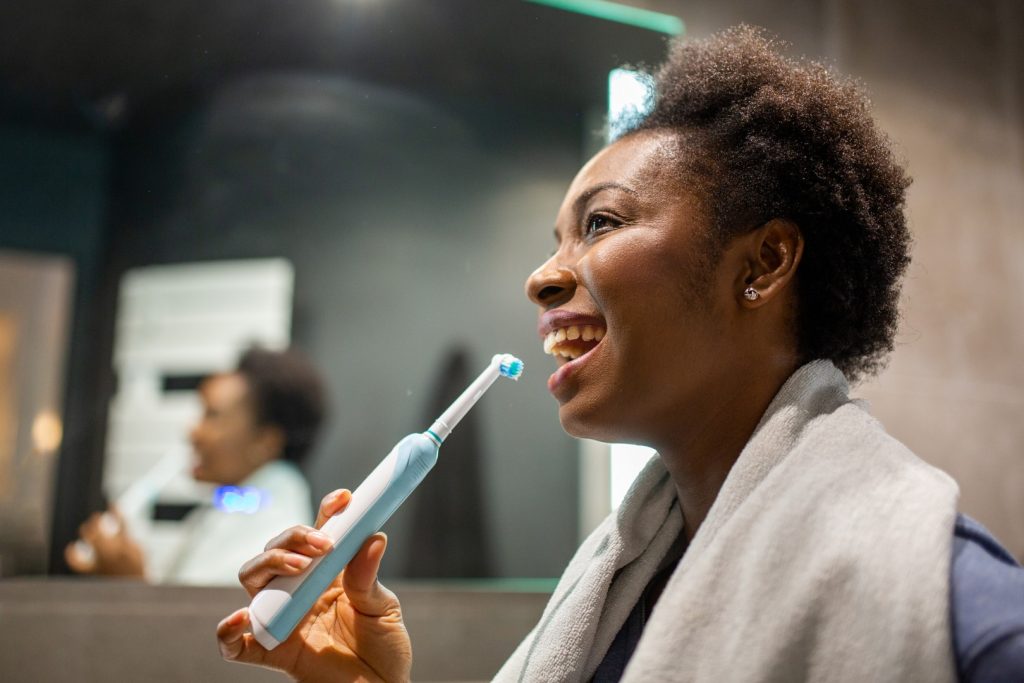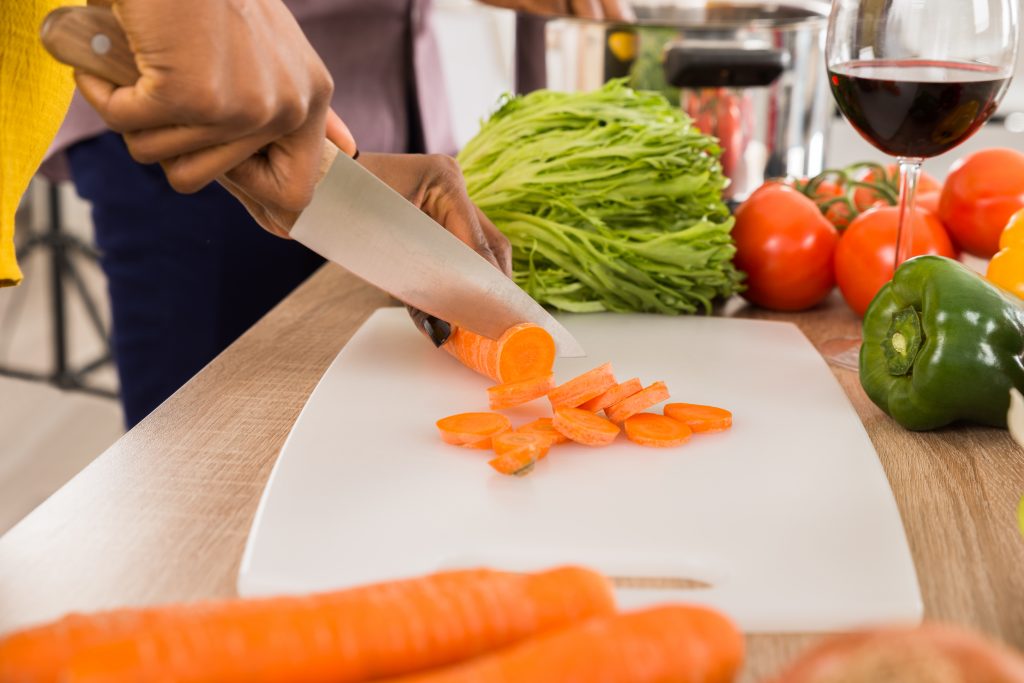Resource Library
Start Reading

Do you want a brighter, whiter smile without the time or expense of professional tooth whitening? Here are some safe, natural teeth whitening steps you can take at home, on your own.
 Practicing good oral hygiene is the best natural teeth whitening technique.
Practicing good oral hygiene is the best natural teeth whitening technique.
Regular brushing and flossing help remove surface stains and plaque that contribute to tooth discoloration. Dentists recommend you brush your teeth at least twice a day for two minutes each time and floss once a day.
When you brush, you can use a fluoride toothpaste that contains whitening ingredients. Fluoride plays a critical role in maintaining good oral health and preventing tooth decay.
Several brands of fluoride toothpaste with mild abrasives for whitening teeth carry the American Dental Association (ADA) Seal of Acceptance. These products are safe and effective according to ADA standards.
Baking soda is a safe ingredient in whitening toothpaste. It has natural abrasive properties that help remove surface stains on teeth. However, don’t use baking soda by itself, as a replacement for regular toothpaste. Excessive use can damage your tooth enamel, and baking soda doesn’t contain fluoride.
Enjoying foods that are high in calcium, iron, malic acid, and natural abrasives can help eliminate stains and discoloration over time.
You may already enjoy many of these foods as part of a healthy diet. If not, add them to your plate for a cost-effective, natural route to whiter teeth.
Apples’ crunchy texture naturally brushes away plaque. Their high water content helps your mouth produce more saliva, washing away bacteria that lead to tartar and tooth stains.
Strawberries are high in malic acid, a natural astringent that prevents stains from forming on your teeth. Unlike such other red foods as red wine or tomatoes, strawberries won’t stain your tooth enamel.
Raw onions have a natural teeth whitening “superpower.” They contain sulfur, which acts as a barrier to plaque forming on teeth.
Snacking on nuts and seeds is like exfoliation for your teeth. Cashews, walnuts, sunflower seeds, almonds, and sesame seeds have abrasive textures that can benefit your smile. Eating a handful of nuts and seeds can help remove surface stains and limit plaque buildup, leaving your teeth slightly whiter.
Do be sure to brush and floss afterward. Seeds and nuts are more likely than some other foods to get stuck in your teeth, where they can lead to irritation of the gums and tooth decay.
Raw vegetables like carrots, celery, and broccoli are great for whitening your teeth because they scrub away plaque. Carrots and celery have a high water content, making your saliva glands work overtime to wash away bacteria. Broccoli is especially good for your oral health, as it is high in iron and calcium. Both minerals help form a protective coating over your teeth, protecting them from acidic foods that can damage tooth enamel and make your teeth more susceptible to stains and decay.
Dentists often recommend enjoying a small piece of cheese for a snack, especially when you can’t brush your teeth immediately. Like yogurt, cheese contains several minerals and acids that support dental health. Lactic acid helps guard against tooth decay, calcium strengthens teeth and gums, and casein helps protect tooth enamel.
 Despite claims in recent years that charcoal and charcoal-based pastes and powders can whiten teeth naturally, clinical research hasn’t confirmed that charcoal is safe or effective.
Despite claims in recent years that charcoal and charcoal-based pastes and powders can whiten teeth naturally, clinical research hasn’t confirmed that charcoal is safe or effective.
Oil pulling is another technique advocates claim produces whiter teeth. The ADA cautions, however, “[T]here is an absence of documented tooth whitening derived from oil pulling, which has also been associated with adverse events ranging from lipoid pneumonia to upset stomach and diarrhea.”
Additionally, some beauty influencers say vinegar, especially white vinegar and apple cider vinegar, makes a good natural teeth whitener. But oral health experts warn: Whitening your teeth with vinegar isn’t safe. Apple cider vinegar and other vinegar do have bleaching effects, but they are extremely acidic and can damage tooth enamel.
While some natural teeth whitening methods can be effective, use them sparingly and don’t rely on them as replacements for regular oral hygiene practices. For the brightest and healthiest smile, brush and floss daily, and visit your dentist every six months for a professional cleaning and exam.
 None of the methods we’ve discussed will produce the same results as professional tooth whitening. At Penn Dental Family Practice (PDFP), we offer take-home teeth whitening kits, which gradually whiten your smile over several weeks, and in-office whitening treatments that give even faster results.
None of the methods we’ve discussed will produce the same results as professional tooth whitening. At Penn Dental Family Practice (PDFP), we offer take-home teeth whitening kits, which gradually whiten your smile over several weeks, and in-office whitening treatments that give even faster results.
To learn more about your teeth whitening options at PDFP, download our free eBook, Teeth Whitening 101.
Or, to talk with us about how we can help you get white teeth and a bright, healthy smile, schedule your appointment online or call us at 215-898-PDFP (7337).